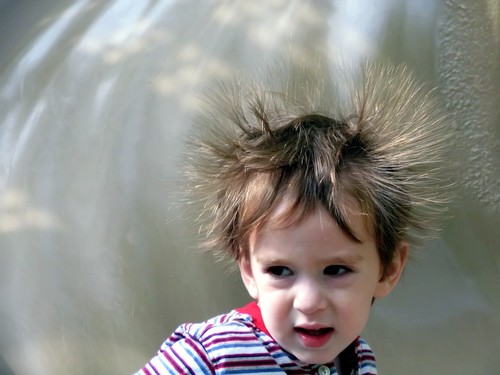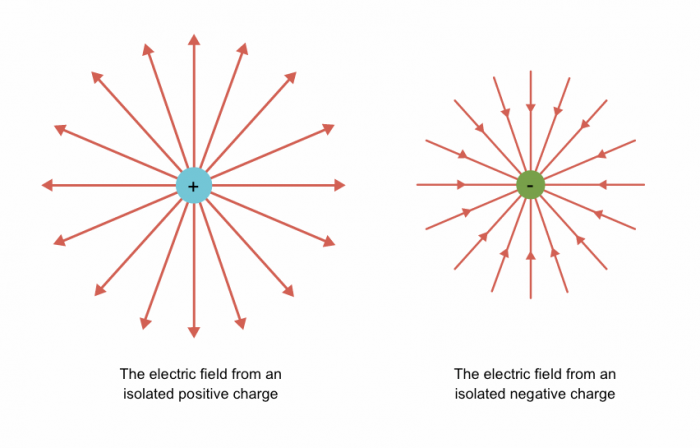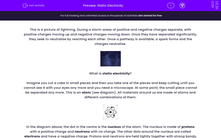This is a picture of lightning.
During a storm, areas of positive and negative charges separate, with positive charges moving up and negative charges moving down.
Once they have separated significantly, they seek to neutralise by reaching each other. Once a pathway is available, a spark forms and the charges neutralise.

What is static electricity?
Imagine you cut a cake into small pieces and then you take one of the pieces and keep cutting until you cannot see it with your eyes any more and you need a microscope. At some point, the small piece cannot be separated any more. This is an atom (see diagram). All materials around us are made of atoms and different combinations of them.
![]()
In the diagram above, the dot in the centre is the nucleus of the atom. The nucleus is made of protons with a positive charge and neutrons with no charge. The other dots around the nucleus are called electrons and have a negative charge. Protons and neutrons are held tightly together with strong bonds, whereas electrons orbit the nucleus and the outer ones are held loosely around the nucleus and can move to other atoms to form bonds. The atom itself has no overall charge.
A common way to move electrons from one place to another is to rub materials together. Some materials hold their electrons very tightly, so they cannot move easily and neither can electricity flow through them. These materials are called insulators. Some examples are plastic, cloth and glass. The more two insulators are rubbed together, the more electrons are transferred between them. Static electricity is the imbalance of positive and negative charges.
How does static electricity cause the boy's hair to stand up like this?

One way is when we remove a woolly hat from our head. When we wear a hat and take it off, it rubs against our hair. Electrons move from the hair to the hat and now each hair has a positive charge. Opposites attract, but same charges repel, so each hair pulls as far as possible away from the others.
An electric field describes the area near any electrically-charged object. The diagram shows an electric field around a negative and a positive charge.

Scientist have agreed that the action inside an electric field should be shown with respect to a positive charge. In our diagram, when the charge in the centre is positive, other positive charges would repel (shown by outward pointing arrows), whereas when there is a negative charge in the centre, positive charges would be attracted (shown by inward pointing arrows).
Let's have a go at some questions now.







